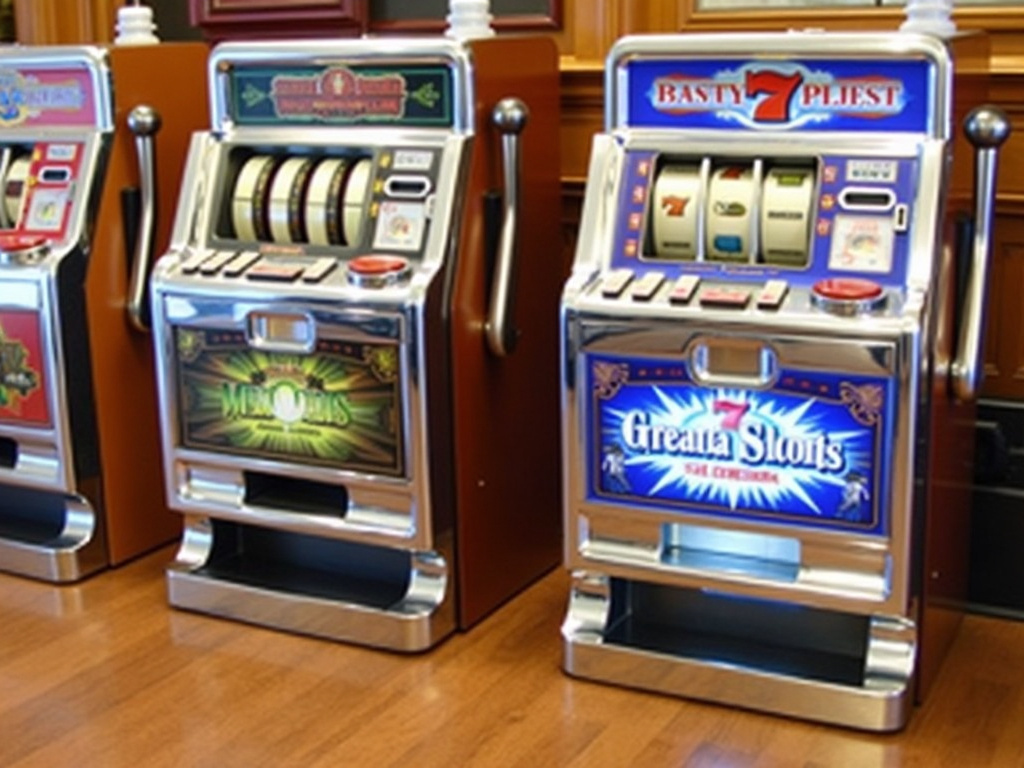Slot machines have come a long way since their invention in the late 19th century. What started as a simple mechanical device has transformed into the digital video slots we see today, offering a diverse and immersive gaming experience. Let’s take a journey through the fascinating history of slot machines, exploring their evolution from the first mechanical machines to the high-tech video slots of the modern era.
The Birth of Slot Machines: The Mechanical Era
The story of slot machines begins in the 1890s with the invention of the first mechanical slot machine, the Liberty Bell. Created by Charles Fey, a San Francisco mechanic, the Liberty Bell was a simple yet ingenious device. It featured three spinning reels, each adorned with symbols like horseshoes, stars, and bells. The machine was operated by pulling a lever, which set the reels in motion. If the reels aligned to show three Liberty Bells in a row, the player would win the top prize of 50 cents.
The Liberty Bell was an instant hit, and its popularity spread quickly across bars and saloons in the United States. Players were captivated by the excitement of pulling the lever and watching the reels spin, hoping to hit the jackpot. This early success laid the foundation for the development of more complex and sophisticated slot machines.
The Rise of Electromechanical Slots
As technology advanced, so did the design of slot machines. In the 1960s, the first electromechanical slot machines were introduced. These machines still relied on physical reels and levers but incorporated electrical components to enhance the gameplay. One of the most significant innovations of this era was the addition of flashing lights, sound effects, and multiple paylines, making the machines more engaging and visually appealing.
One of the most famous electromechanical slots was Money Honey, developed by Bally in 1963. Money Honey was the first slot machine with a bottomless hopper, allowing it to automatically dispense up to 500 coins without the need for an attendant. This feature revolutionized the industry, making slot machines even more popular in casinos.
The introduction of electromechanical slots also marked the beginning of the end for the traditional lever, which was gradually replaced by buttons to start the game. However, many players still nostalgically refer to slot machines as “one-armed bandits,” a nod to the original lever-operated machines.
The Digital Revolution: The Birth of Video Slots
The 1970s and 1980s saw the next major leap in slot machine technology with the development of video slots. Unlike their mechanical and electromechanical predecessors, video slots did not rely on physical reels. Instead, they used a video screen to display the spinning reels. This shift to digital technology opened up a world of possibilities for game designers.
The first video slot, Fortune Coin, was introduced in 1976 by Fortune Coin Co. in Las Vegas. It used a modified 19-inch Sony TV to display the reels and was initially met with skepticism. However, after regulatory approval and a few technical adjustments, video slots quickly gained popularity. Casinos recognized the potential of these machines, as they offered greater flexibility in game design, allowing for more paylines, bonus features, and interactive elements.
The Modern Era: Online Slots and Mobile Gaming
The advent of the internet in the 1990s brought about another revolution in the world of slot machines. Online slots emerged, allowing players to enjoy their favorite games from the comfort of their homes. This shift to online gaming dramatically expanded the reach of slot machines, making them accessible to a global audience.
Online slots offered a range of new features that were not possible with physical machines, including elaborate bonus rounds, progressive jackpots, and high-definition graphics. Game developers began experimenting with various themes, from ancient civilizations to popular movies, creating a diverse array of slots to appeal to every type of player.
With the rise of smartphones and tablets, mobile slots became the next big trend. Players could now enjoy their favorite slot games on the go, anytime and anywhere. Mobile gaming has continued to grow, with developers optimizing their games for smaller screens and touch controls, ensuring a seamless and engaging experience on mobile devices.
The Future of Slot Machines
As technology continues to advance, the future of slot machines looks more exciting than ever. Virtual reality (VR) and augmented reality (AR) are already making their way into the gaming industry, offering even more immersive and interactive experiences. Developers are also exploring the use of artificial intelligence (AI) to create personalized gaming experiences that adapt to players’ preferences and behaviors.
From the simple mechanical machines of the late 19th century to the high-tech video slots of today, slot machines have continuously evolved, driven by innovation and player demand. As we look to the future, one thing is certain: slot machines will continue to captivate and entertain players around the world, just as they have for over a century.
